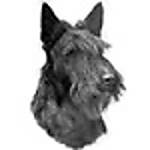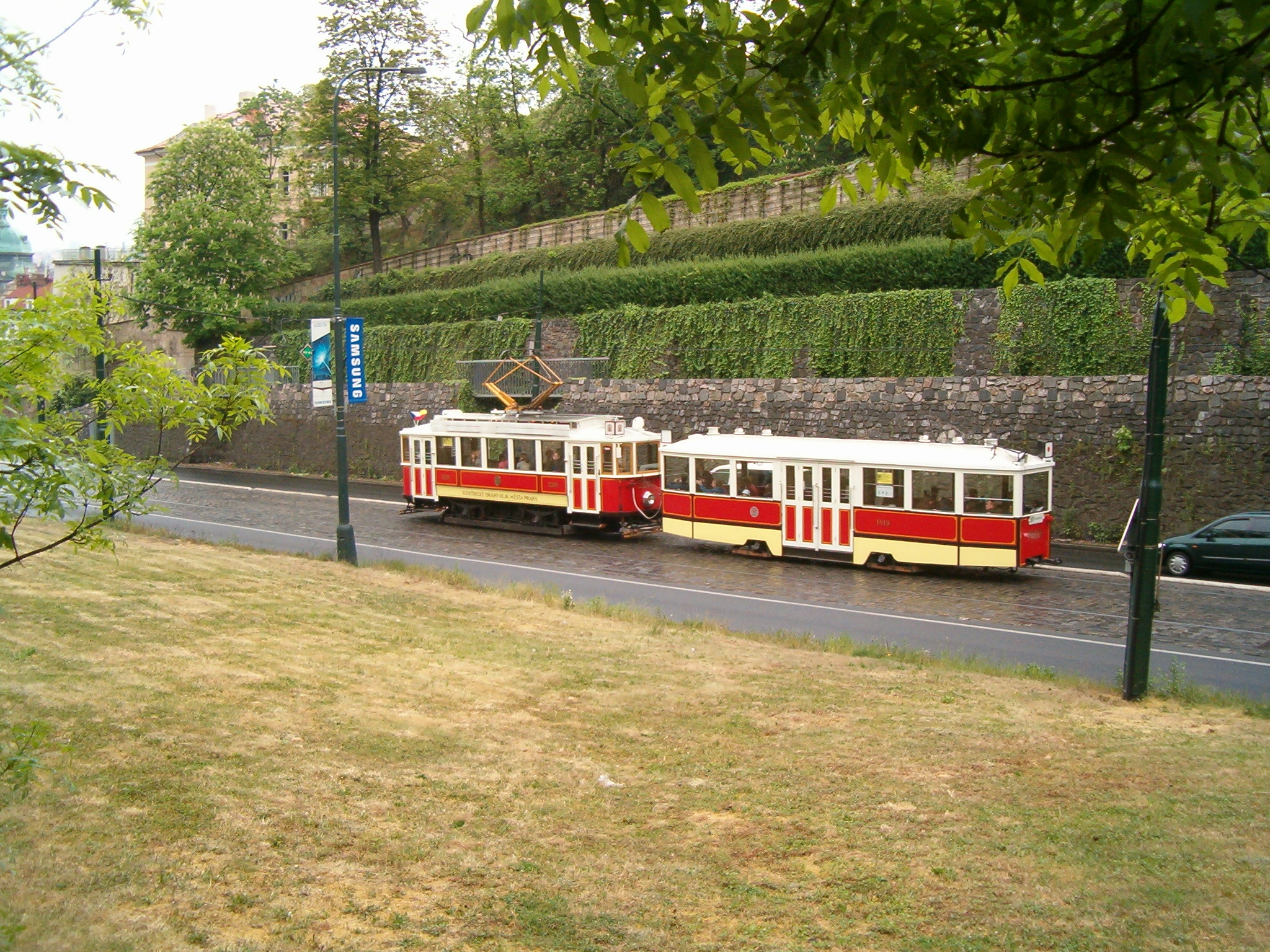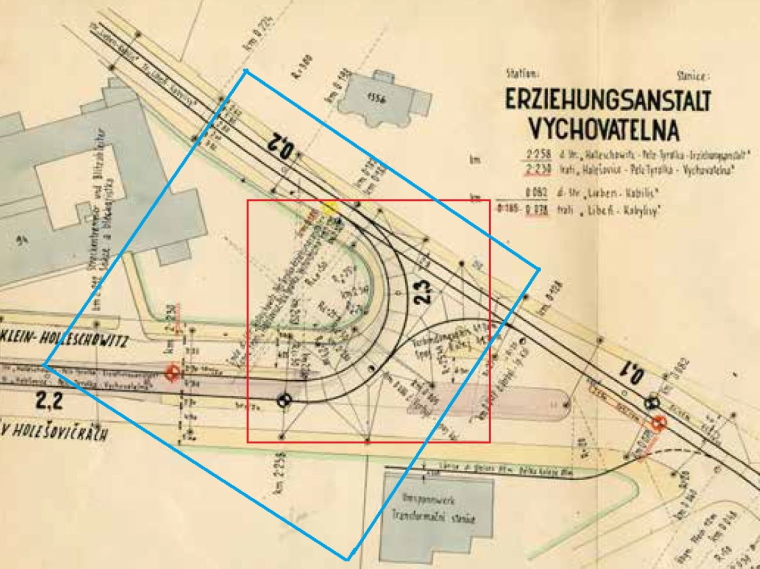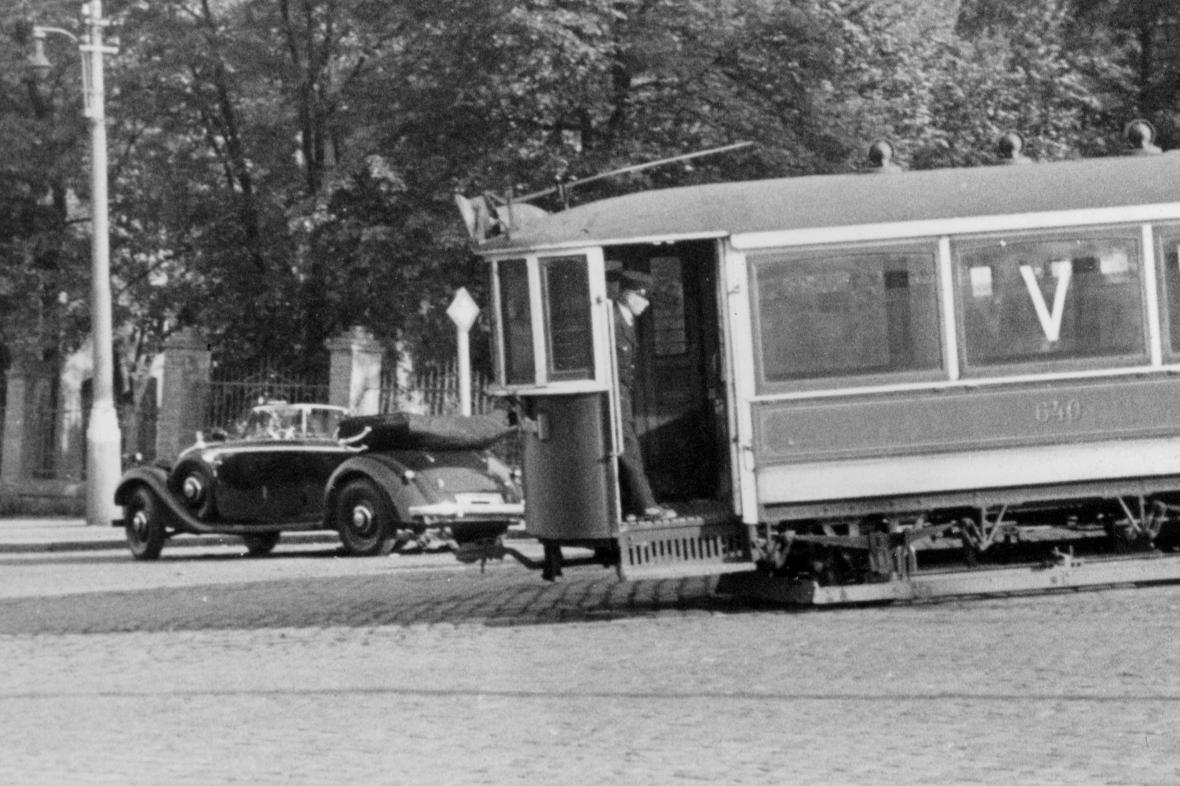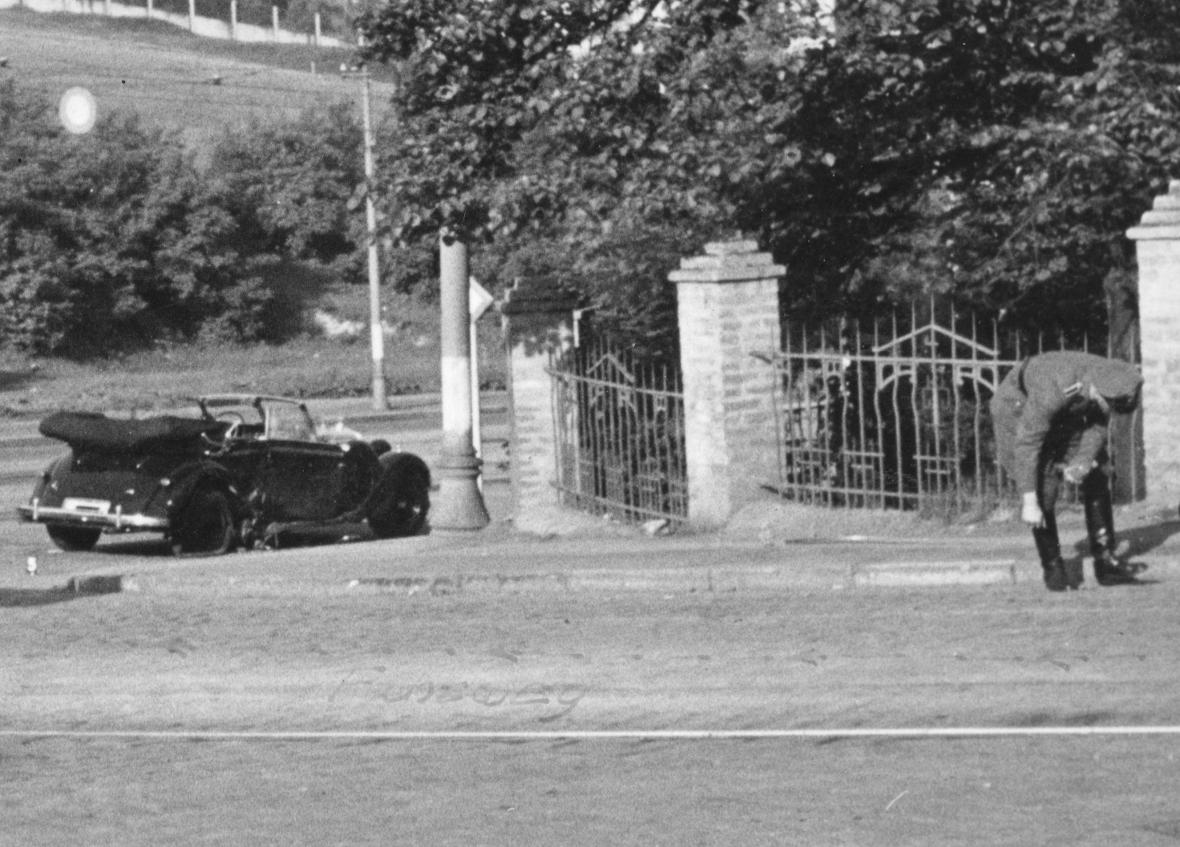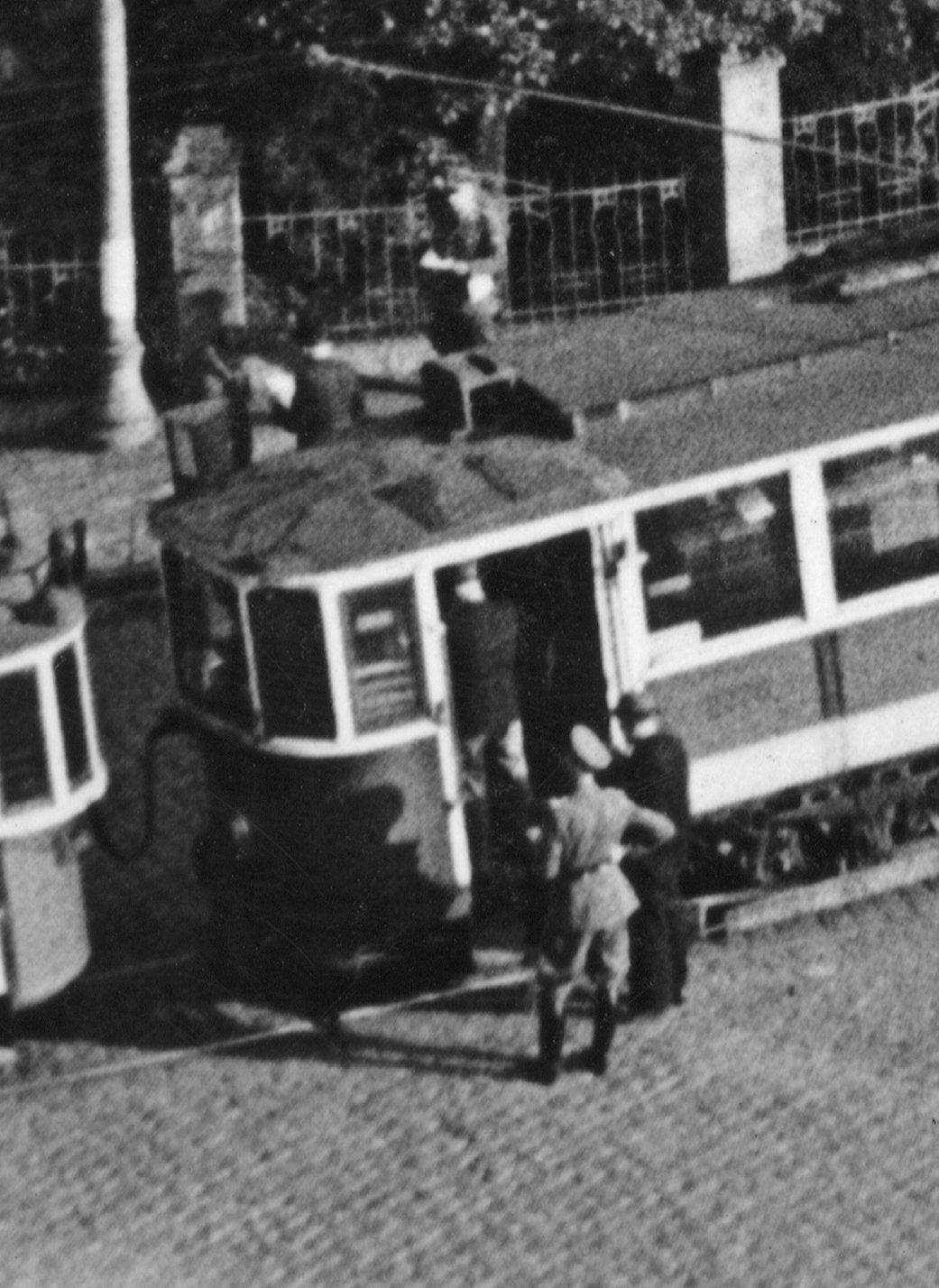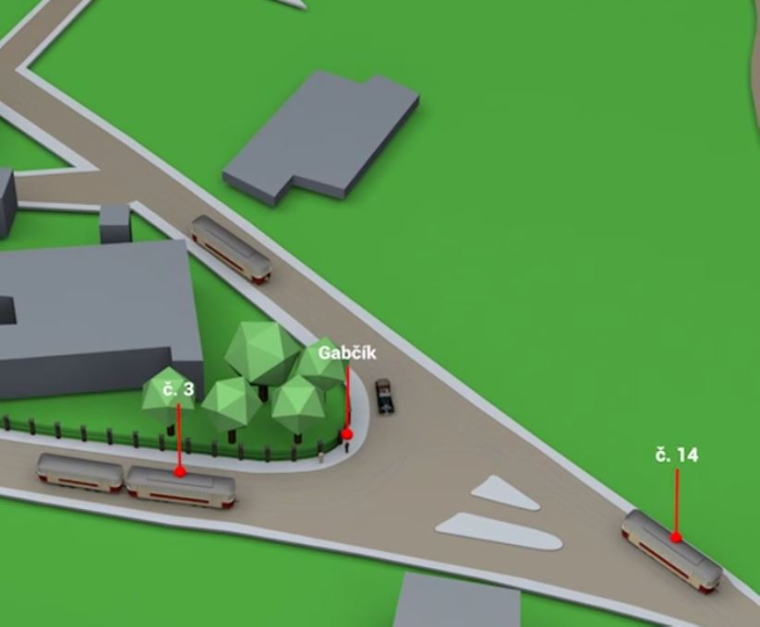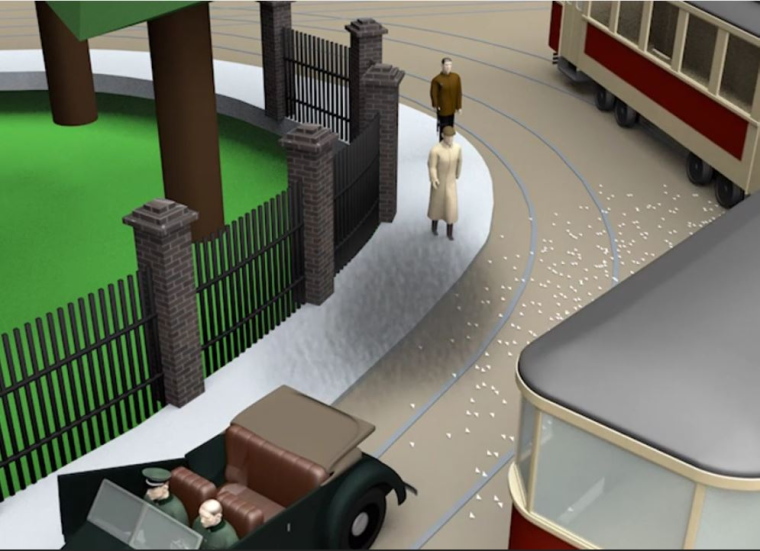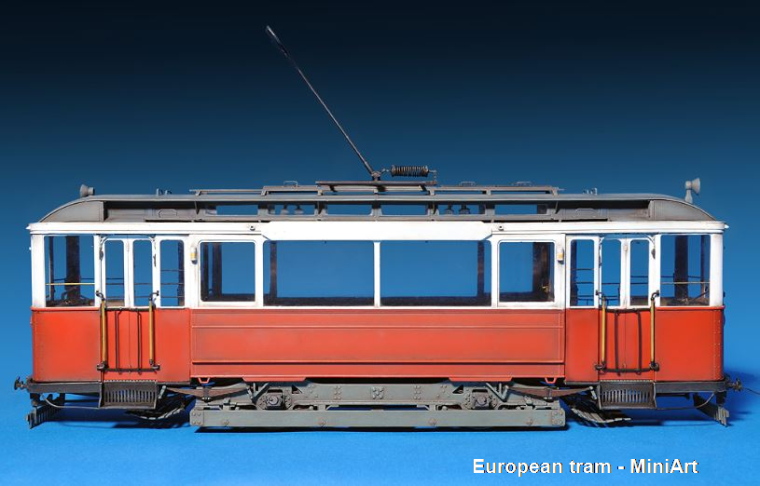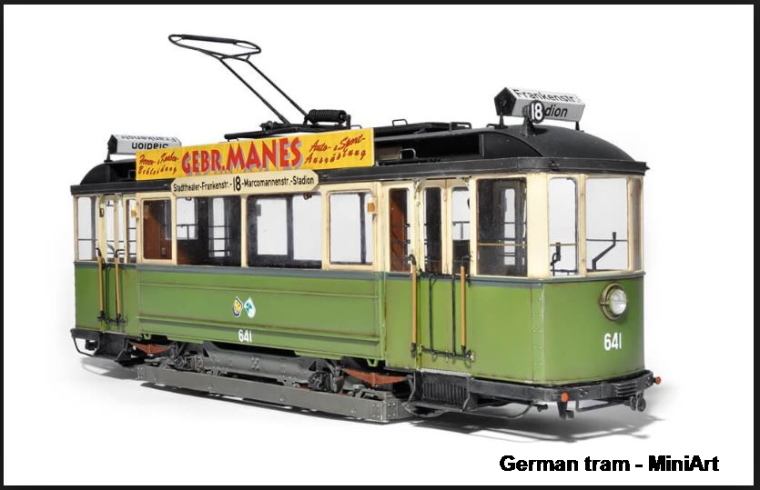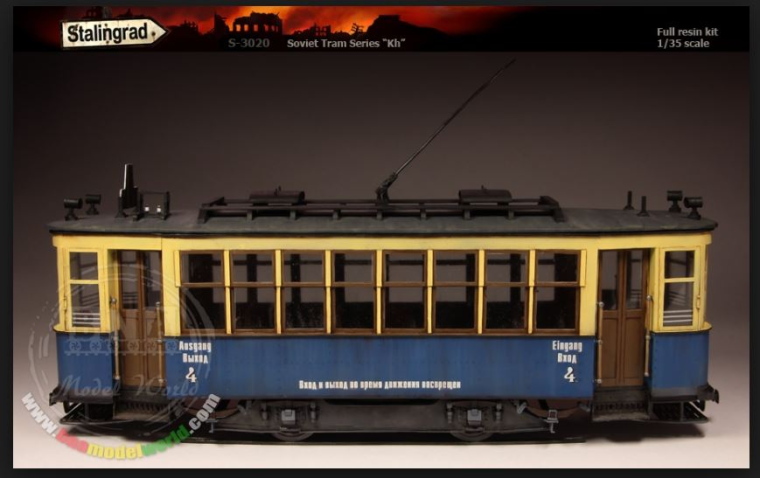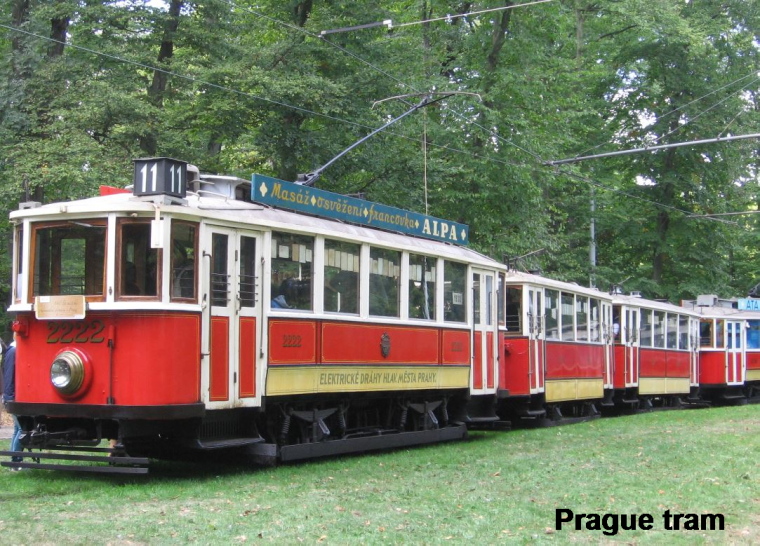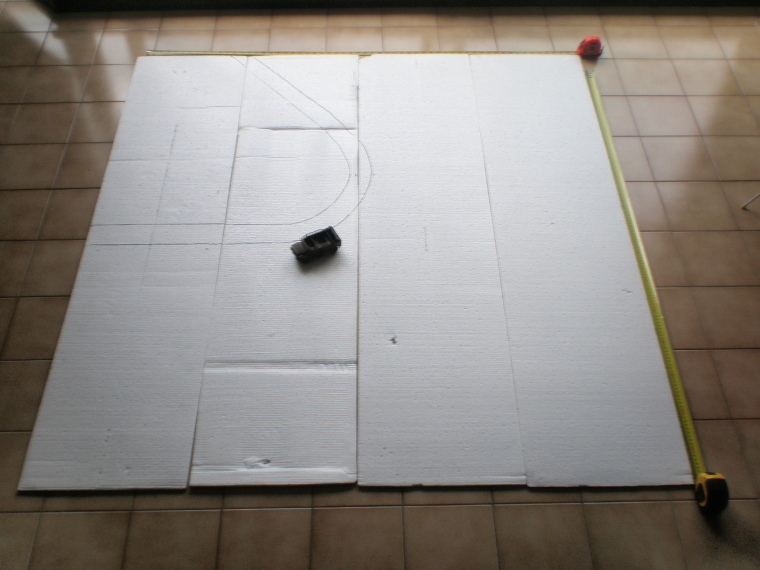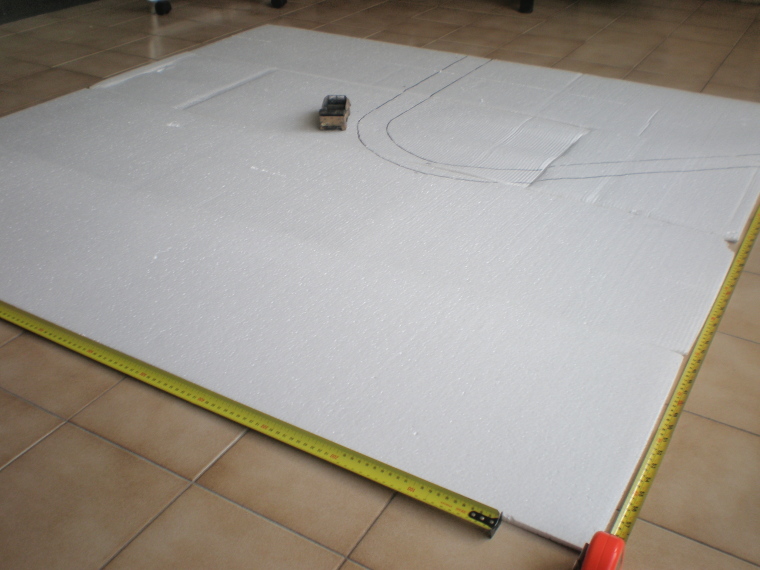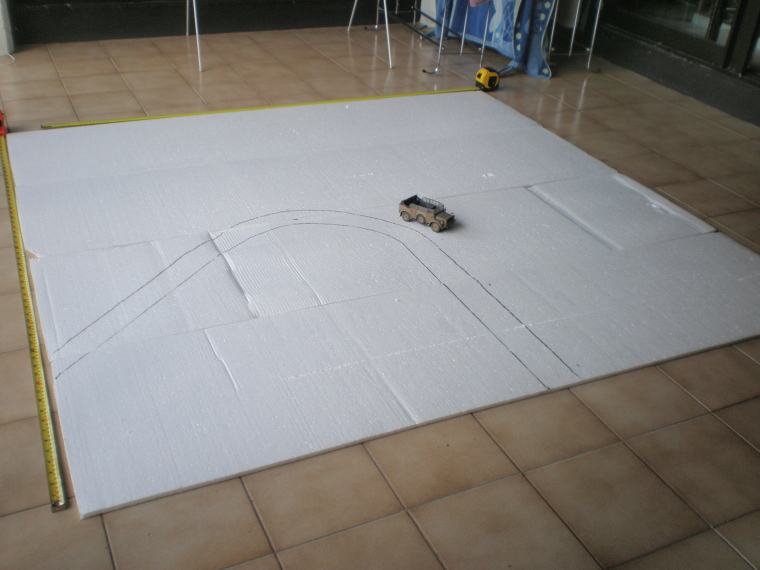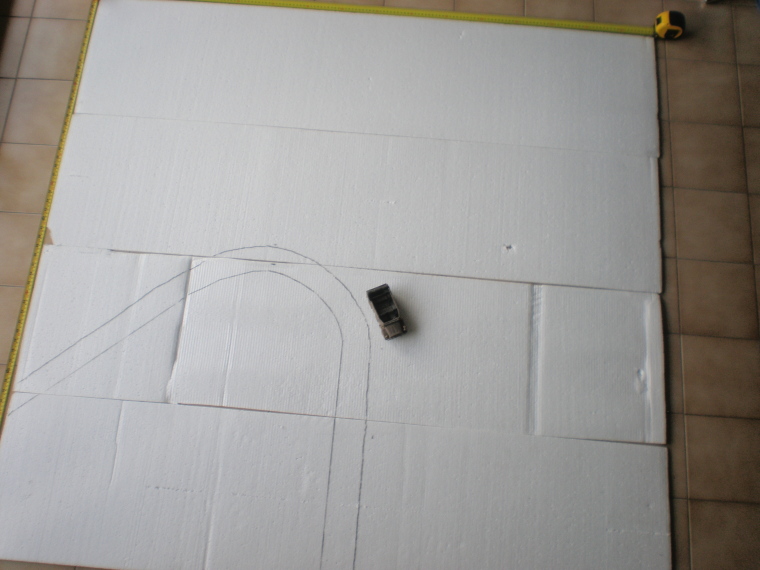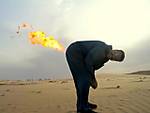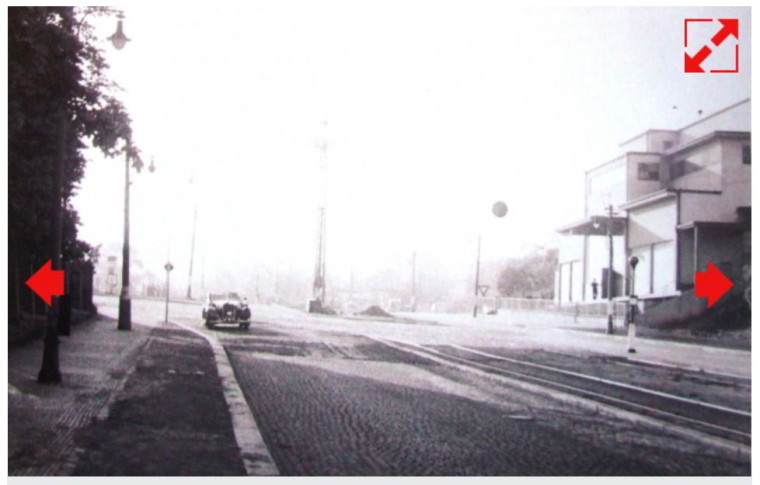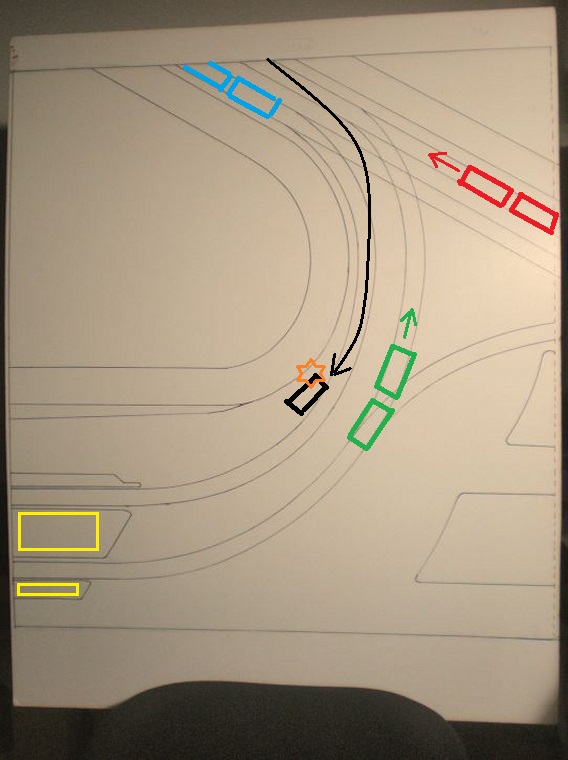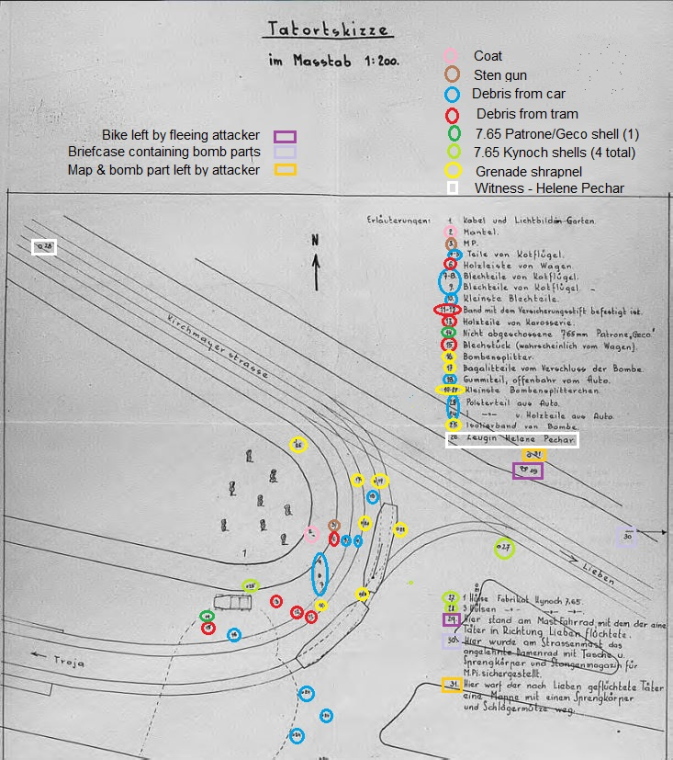Alright, my girlfriend (for the credits: her name's Zdenka

) and I went through the article provided by Frenchy written in Czech. There's a lot of info in it to tell here, so I'll have to sort it somehow. Let's see where to begin. All I'm writing now is coming from the article. It will be a lot, so I will not discuss or conclude here in this post. It is the base for further discussion and I'll provide my own conclusions in a later post...
First of all the article underlines what we know today and clarifies what is still based on assumptions.
It is today absolutely clear, that NONE of the known/existing pictures is of the actual assassination just simply due to the fact that there was no one present with a camera back then. All the pictures we know and share here are from one of the several reconstructions/reenactmens by the police investigation mostly. That is the very first and most important thing to keep in mind.
Concerning the reconstructions by the police it has to be considered, that many of the
eye witnesses left the scene after the attack. The ones who were interrogated by the Gestapo later told (for obvious reasons; most of them were Czechs NOT liking the Nazi German occupants) not always the truth, left certain facts out or even outright lied about the events. So it was very hard to paint the right picture here... The thing is, that no one can clarify what was a lie and what not by the eye witnesses, because what they said after the war was not only quite different but could also be very likely have been lies, since they were seen as collaborators by the then Czechoslovakian communist regimne. So they were bitten twice: first the Gestapo, then the communists... so what they told was both times obviously to safe their own lifes in the first place. And not to mention that many Gestapo documents were lost and/or destroyed in the last months and the aftermath of the war.
Nevertheless does the current research on the topic confirm that there must have been
two trams at the site when the attack happened. One (line No.3) coming from the left and just passing the scene when the attack happened. That is the one we always see in the pictures. But remember, the one in the pictures is NOT the actual one. More on the trams and car specifics comes further down in this post.
It seems to be obvious, that there was a second tram (line No.14) coming from the right going uphill the same way as the No.3 after the intersection (compare to the tram line map in the document on page 87 to see what I mean). The view on Heydrichs car was blocked by tram No.3 standing there but they (No.14 staff) seemed to have noticed something (most probably the explosion), but the staff decided to move on as quickly as possible to not get into any trouble with Gestapo, i.e. acting as if they hadn't seen anything and therefore don't know anything. The staff on that No.14 also decided to NOT talk to anyone about it. Only by accident the police found out a couple of weeks later about that other tram No.14.
This is the reason why in all the reenactment pictures we only see No. 3 directly in front of Heydrichs car. If there is the need to clarify this, I will do a little sketch on it. Just tell me, and I'll post it here then.
Some stuff of what I said will be clarified also by the pictures' captions which are following (I'm talking about the pictures in the article here, please see the link Frenchy posted on page two of this thread; most of what I'm writing here is not a literal translation but rather what it actually says in my own words

):
Page 86: 1. View on Heydrichs car in the V Holesovickach street from the tram tracks Liben-Kobylisy. You can see the joining of the tracks into the triangle/intersection called "Vychovatelna", enabling the connection from Troja to Liben as well as the possibility to U-turn the trams.
2. View on the tracks from Kobylisy to Liben. The stop for Tram lines 3 and 14 are seen before the intersection farther down the street in the direction of the view.
Page 87:1. Map illustrating the Tram lines (also connecting bus lines from the terminal stations) in 1941. You can see the intersection and the nearby terminal stations for Tram lines 3 and 14.
Page 88:1. The intersection layout is nowadays completely different. The trams (i.e. the triangle) eventually disappeared in 1980. The only remainder from the 40ies is the transformer station building built in 1937. Picutres are from 1942 and 2014.
Page 89:1. Since September 1940 the staff of Prague Tram Transportation Services were obliged to take German language courses and do exams accordingly. You see the preserved exam sheet of one of the staff members who was supposedly in one of the passing trams during the attack.
Page 90:1. Tram cars of serial numbers 2275(front)+640(back) during the reenactment by police or Gestapo. You can see the escape routes and the objects found at the scene. You can also see trams of line 14 behind the intersection. The fact that it is there at the reenactment set a theory into motion that there could have been a train from Kobylisy to Liben at the time of the assassination. If you take a closer look it is evident that there are more trams of line No. 14 lining up at the station behind. (they all had been stopped by the investigating police so not to disturb the actual reenactment we see in the front). Missing on the photograph is the No. 14 directed Kobylisy (uphill) because obviously the police might have not known it was there. But one of No. 14s ticket clerks' (name: Opletal) witness accounts was recorded only a week later.
The red captions on the picture itself are written in German (what a nice coincidence that I'm German and can easily read them  ) and read from left to right as follows:
) and read from left to right as follows: - projectiles [
a name 765]
- site of throwing the bomb
- 3 shells [
another name- coat and machine gun
- escape route
- escape route
- eye witness Schranek (he was one of the tram passengers chasing Gabcik after the attack until he realized that Gabcik had a firearm and ceased chasing -> that's what he told Gestapo)
Page 91:1. View on the cars 2275+640 simulating the position of tram No. 3 at the time of the attack.
2. The opposite view documents Heydrichs damaged car. In the trams you can still see the letter "V" which stands for "Victory for the 3rd Reich". It was used in Germany and the occupied territories since July 1941 right after the attack on the USSR. Beginning 1942 it was ordered to remove them again but some remained still for quite some time (visible here).
Page 92:1. Map of intersection in fall 1942 with the positions of the stations. The original stops are in yellow.
Page 93:1. This picture is showing the power pole in the background as the reason for the tracks being so far apart from one another. (because the poles were standing in the middle)
2. Reconstruction of the intersection took place in 1953 with changing the overall layout. On the picture you see a tram coming from Kobylisy going to Troja.
Page 94:Detailled view on the second car (serial 640) and Heydrichs damaged car in the so called "Heydrich curve" where the hill slopes by 68‰ (per mill) within a distance of 20 meters.
Page 95:1. Pulled/towed car "Krasin" with (production?) No. 1469 on a picture from 1970. It was most probably this very car going through at the 1942 assassination (instead of the one in the reenactment pictures).
2. The motor car with (production?) No. 2275 which is shown on the reenactment pictures (here also with towing a "Krasin").
Page 96:1. This photograph from 1936 is documenting the original layout of the intersection
when the trams were still going on the left side of the street (indicating that it was changed sometime in between to right-side traffic. It remains unclear from the caption though if it was changed between 1936 - 1942 or between 1942 - today) According to eye witness F. Zima (staff member) it seems like that 1942 Tram No.3 had the "Krasin" type (with middle door) as pulled/towed car which is depicted here on a Tram No. 14.
Page 99:1. Picture from 1936 showing the original intersection with the power poles standing between the tracks (i.e. in the middle).
So much for now. There's much more info in that article but I think my post's long enough already and excels on the most important stuff IMHO. If there's more details needed I can still write about it later (the article examines especially the roles of all the eye witnesses and when they said what and why and what to make out of all the accounts etc.)
Cheers!

 . Here are hi-res views from Wikipedia :
. Here are hi-res views from Wikipedia :



